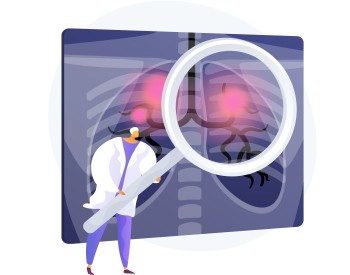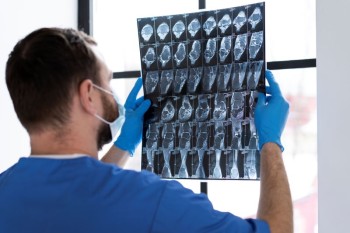
CT Urography, also known as Urogram, is a specialized imaging technique designed to visualize the urinary tract, including the kidneys, ureters, and bladder.
CT Scan Urography or Urogram in India with Cost
CT Urography: Unveiling
the Intricacies of Urological Imaging
Introduction
Embark on a journey through the realm of diagnostic imaging, where CT Urography or Urogram Scan takes center stage. This advanced diagnostic tool provides a detailed exploration of the urinary system, offering invaluable insights for healthcare professionals. This article aims to unravel the intricacies surrounding CT Urography, exploring its significance, the scanning process, applications, and its transformative impact on urological diagnostics.
Understanding CT Urography
CT Urography, also known as Urogram, is a specialized imaging technique designed to visualize the urinary tract, including the kidneys, ureters, and bladder. This non-invasive procedure employs computed tomography to generate detailed cross-sectional images, allowing healthcare providers to assess the urinary system with exceptional clarity.
The Procedure Unveiled
Imagine a virtual journey through the intricate pathways of the urinary system—that's the essence of CT Urography. Patients lie on a specialized table that moves through a circular machine, capturing detailed images of the kidneys, ureters, and bladder. Contrast agents, often injected into a vein, enhance visibility, enabling healthcare professionals to identify potential abnormalities.
Addressing concerns about radiation exposure during CT scans is crucial. Modern machines are equipped with dose-reduction technologies to ensure that radiation doses are carefully calibrated, prioritizing patient safety without compromising image quality.
Applications in Urological Diagnostics
The diagnostic capabilities of CT Urography extend across various urological conditions. From detecting kidney stones, assessing urinary tract infections, to identifying tumors within the urinary system, this imaging modality plays a pivotal role in formulating accurate diagnoses and guiding treatment plans.
Advantages Over Traditional Imaging
Bid farewell to the limitations of traditional imaging techniques. CT Urography offers a quantum leap in precision, providing detailed images that enable healthcare professionals to diagnose urological conditions with unprecedented accuracy. The three-dimensional perspective enhances the understanding of complex anatomical structures and aids in devising tailored treatment plans.
Ensuring Patient Comfort and Safety
Patient comfort is paramount during any medical procedure. While the use of contrast agents may cause a temporary sensation of warmth, radiologic technologists are trained to manage any discomfort effectively. Safety measures, including meticulous contrast administration and monitoring, contribute to a positive patient experience.
Special Considerations for Specific Cases
Tailoring the approach to specific patient cases is essential. For individuals with allergies, existing medical conditions, or concerns about contrast agents, healthcare providers adapt the procedure to ensure the safety and appropriateness of CT Urography.
Interpreting CT Scan Results
Interpreting the results of a CT Urography requires specialized knowledge. Radiologists carefully analyze the images to identify urological abnormalities, assess urinary tract conditions, and provide comprehensive reports to referring physicians. Collaboration between radiologists and urological specialists is crucial for accurate interpretation.
Real-Life Cases and Success Stories
The impact of CT Urography on patient outcomes is evident in real-life cases and success stories. Timely and accurate diagnoses facilitated by this imaging modality contribute to effective treatment interventions and improved quality of life for individuals with urological conditions.
The Future of CT Urography
As technology continues to advance, the future of CT Urography holds promise for further refinements. Ongoing research aims to refine imaging capabilities, potentially reducing scan times, increasing resolution, and expanding applications. The evolving landscape of diagnostic imaging is set to benefit from these future innovations.
Patient Education and Awareness
Educating patients about CT Urography is vital for dispelling concerns and fostering informed decision-making. Increased awareness of the procedure, its applications, and potential sensations during the scan contributes to a more confident and engaged patient population.
Costs and Insurance Coverage
Understanding the financial aspects of undergoing CT Urography is essential. While the diagnostic value is significant, patients should be aware of potential costs and verify insurance coverage. Open communication with healthcare providers ensures transparency regarding any out-of-pocket expenses.
Common Misconceptions
Addressing common misconceptions about CT Urography is essential for a better-informed public. Concerns about contrast agent safety, radiation exposure, and potential discomfort during the procedure can be clarified through clear communication and patient education.
Conclusion
In conclusion, CT Urography stands as a transformative force in urological diagnostics, providing detailed insights into the urinary system. From its detailed procedure to real-life success stories and the potential for future advancements, this article aimed to offer a comprehensive understanding of the significance and impact of CT Urography in modern healthcare.
FAQs - Your Questions Answered
1. How long does a CT Urography procedure typically take?
The duration of a CT Urography procedure varies but generally ranges from 30 minutes to an hour, depending on the specific areas being imaged and the complexity of the examination.
2. Is there any discomfort associated with undergoing a CT Urography?
The procedure is generally painless. Patients may experience a temporary sensation of warmth due to the injection of contrast agents, but radiologic technologists ensure patient comfort throughout the process.
3. Are there any specific preparations needed before undergoing CT Urography?
In some cases, fasting may be required before the procedure. Patients are advised to inform healthcare providers of any allergies, existing medical conditions, or medications they are taking.
4. Can pregnant individuals undergo CT Urography?
While the use of radiation is generally minimized, pregnant individuals are typically advised to avoid unnecessary medical imaging. Alternative imaging methods may be considered, and consultation with a healthcare provider is recommended.
5. Is CT Urography covered by insurance?
Insurance coverage for CT Urography depends on the specific insurance plan and the medical necessity of the procedure. Patients are encouraged to check with their insurance providers to understand coverage details.
6. Can CT Urography detect kidney stones effectively?
Yes, CT Urography is highly effective in detecting kidney stones. The detailed imaging allows for accurate identification of stone location, size, and potential impact on the urinary system.
7. How often is CT Urography recommended for monitoring chronic urological conditions?
The frequency of CT Urography for monitoring chronic urological conditions varies based on the specific condition, the individual's medical history, and the recommendations of healthcare providers. It is tailored to each patient's unique needs.
6. Can CT Urography detect urinary tract infections (UTIs)?
Yes, CT Urography is capable of detecting signs of urinary tract infections. It provides detailed images of the urinary system, allowing healthcare providers to assess any abnormalities or infections affecting the kidneys, ureters, or bladder.
7. Are there any age restrictions for undergoing CT Urography?
There are generally no strict age restrictions for CT Urography. The decision is based on the individual's overall health and medical necessity. Pediatric and elderly patients may undergo CT Urography if deemed appropriate by healthcare providers.
8. What role does CT Urography play in diagnosing kidney conditions?
CT Urography plays a crucial role in diagnosing various kidney conditions, including kidney stones, tumors, and structural abnormalities. The detailed imaging allows for accurate assessment, aiding in timely and precise diagnoses.
9. Is there a need for follow-up appointments after undergoing CT Urography?
Follow-up appointments may be recommended based on the findings of the CT Urography. It allows healthcare providers to monitor any identified conditions, assess treatment effectiveness, or plan further interventions as needed.
10. Can individuals with claustrophobia undergo CT Urography comfortably?
CT Urography is typically performed in an open, spacious machine, reducing the likelihood of claustrophobia-related discomfort. Radiologic technologists are trained to ensure patient comfort, and patients can communicate any concerns before the procedure.
11. What information should patients provide to healthcare providers before CT Urography?
Patients should inform healthcare providers about any allergies, existing medical conditions, medications, or prior reactions to contrast agents. This information helps tailor the procedure to ensure patient safety and appropriateness.
12. How soon can patients resume normal activities after CT Urography?
Patients can generally resume normal activities immediately after CT Urography. However, staying hydrated is advised to help eliminate the contrast agent from the body. Any specific post-procedure instructions will be provided by healthcare providers.
13. Can CT Urography detect bladder abnormalities effectively?
Yes, CT Urography is highly effective in detecting bladder abnormalities. The detailed imaging allows for accurate visualization of the bladder, aiding in the identification of conditions such as tumors or structural issues.
(0)
Login to continue



